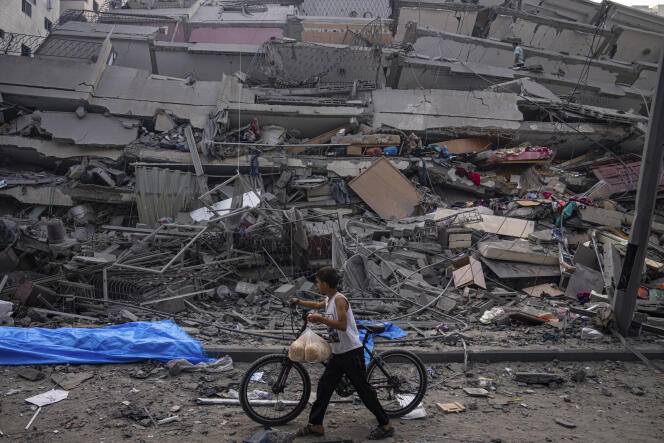


Gaza is a broken city. A blind giant seems to have trampled over whole swathes of this metropolis of 1.2 million inhabitants. Since the massacres by Hamas in southern Israel on October 7, the Israeli army's indiscriminate bombardments have largely ruined it. The army is looking for an enemy hiding among the civilians, but it is also punishing an entire city, deemed guilty of Hamas's crimes by the Israeli authorities from the outset.
All that remains of Gaza City's distant northern suburbs are charred carcasses, smashed to smithereens by the strikes that paved the way for the ground invasion on October 28. In the space of three weeks, armored vehicles and infantry had taken control of the western half of the enclave's main city, advancing slowly under heavy air support, which punched numerous craters into the boulevards of the Rimal neighborhood and around the hospitals. Fighting continued in downtown Gaza over the weekend. On Monday, November 20, the Israeli army said it was continuing to extend its operations into new neighborhoods, notably in Jabalia.
Since November 17, the infantry has been advancing towards the narrow streets of the old city, the center and the eastern half of Gaza. What will be left of it in a few weeks' time, when Israel proclaims that Hamas has been driven out? By Sunday, 25% of the inhabited areas of the city and its northern region had already been destroyed, according to estimates from the Palestinian Authority's Ministry of Public Works.
The United Nations Office for the Coordination of Humanitarian Affairs said that at least 58% of the homes in the entire enclave have been destroyed or damaged. A study of satellite photographs, using software developed by the website Bellingcat, leads to a conservative estimate that 40% to 50% of Gaza City's built-up area had been destroyed or damaged by November 16 – and up to 70% of the Al-Shati refugee camp on the seafront.
Ramallah authorities have drawn up endless lists: They count 280 educational institutions and over 200 places of worship damaged. All but one of Gaza's hospitals are at a standstill. Water and electricity distribution networks are unusable. A quarter of the enclave's roads have been damaged.
"Gaza is already destroyed. It's nothing more than a ghost town, populated by a few hundred thousand displaced persons [800,000, according to the Palestinian Authority]. The Israelis wanted to punish one of the oldest cities in the world, by hitting its universities, its bookshops, its grand hotels, its parliament and its ministries," said Ehab Bsaiso, a former culture minister for the Palestinian Authority. "On November 13, a great music teacher, Elham Farah, was wounded in the street by shrapnel. She bled to death on the sidewalk. They're wiping out a whole social mosaic, a whole culture, and soon the tanks will be advancing toward the Archaeological Museum and the old Orthodox Church of Saint Porphyrius, an annex of which was bombed on October 19." From an old Gazan family, this senior civil servant follows the wanderings of his relatives to the four corners of their hometown and the blockaded enclave by telephone from Bethlehem, in the occupied West Bank, with a heavy heart.
You have 85% of this article left to read. The rest is for subscribers only.
